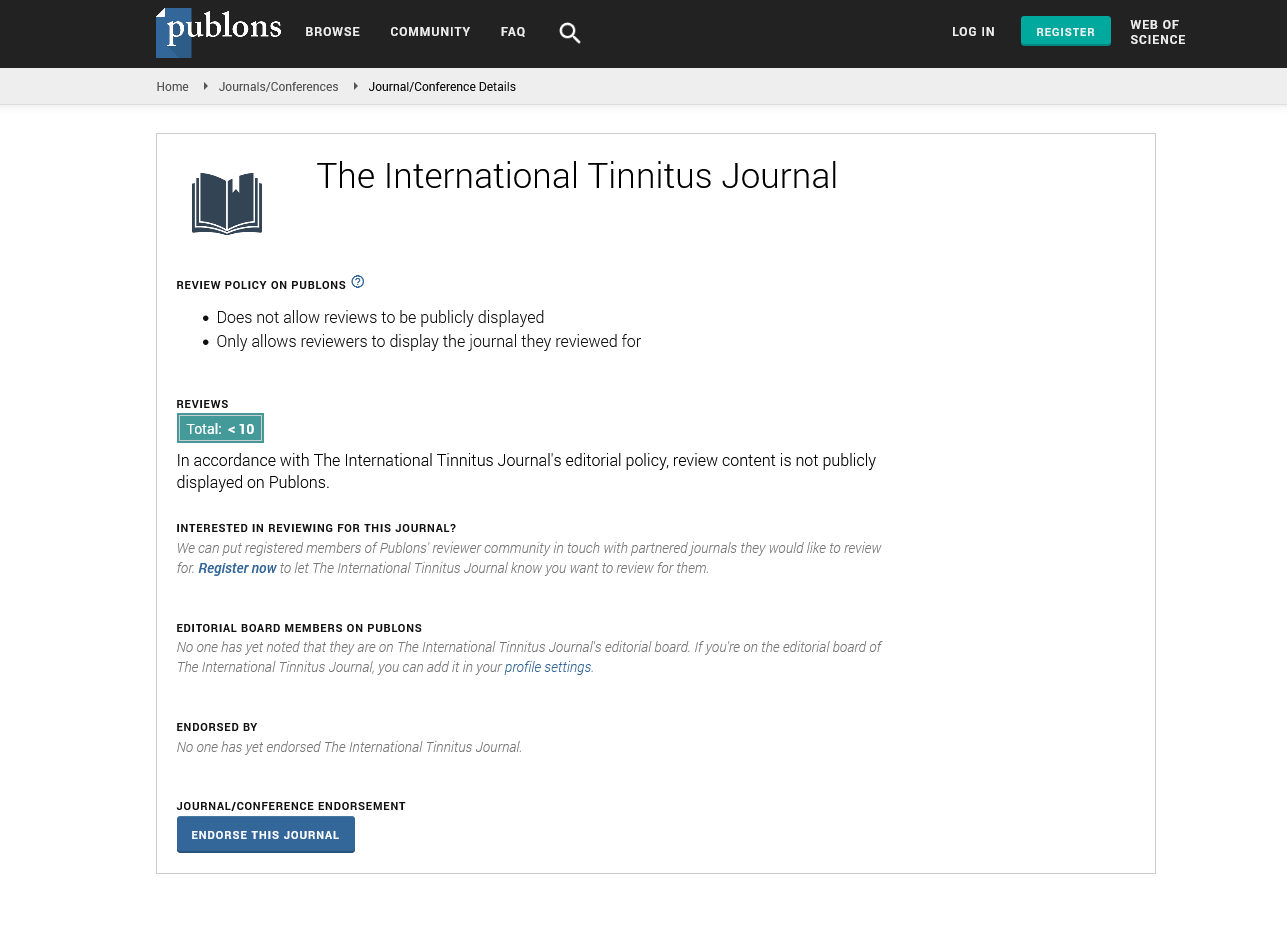The International Tinnitus Journal
Official Journal of the Neurootological and Equilibriometric Society
Official Journal of the Brazil Federal District Otorhinolaryngologist Society
ISSN: 0946-5448

Google scholar citation report
Citations : 12717
The International Tinnitus Journal received 12717 citations as per google scholar report
The International Tinnitus Journal peer review process verified at publons
Indexed In
- Excerpta Medica
- Scimago
- SCOPUS
- Publons
- EMBASE
- Google Scholar
- Euro Pub
- CAS Source Index (CASSI)
- Index Medicus
- Medline
- PubMed
- UGC
- EBSCO
Abstract
Effect of Transcranial Direct Current Stimulation (tDCS) on Auditory Evoked Potentials among Senior Citizens aged 60-70 Years with Dementia
Author(s):Yamini BK*, Srividya, Palanimuthu Thangaraju Sivakumar
Background: Auditory Event-related potentials (AEP’s) provide insights into auditory perception, phoneme discrimination, language processing, and other cognitive processes. Bi-syllabic minimal pairs may be more challenging because they require processing and discrimination of more complex phonemic structures. Aim: The aim of the study was to elicit and analyze the AEP’s for bi-syllabic word stimuli in Kannada language among individuals with dementia, and to analyze the impact of Transcranial direct current stimulation (tDCS) on the AEP’s. Method: The prospective study was conducted on fifteen native kannada language speakers (5 male; 10 female) aged 60 -70 years diagnosed with Dementia. The naturally produced and recorded CVCV tokens (/ko:ti/-/ko:thi/; /a:me/- /a:ne/) in Kannada were used in auditory oddball paradigm to record the prominent peak for word (PPW) AEP’s. The tDCS was administered for 10 sessions for each participant and the PPW were used to obtain the latency and amplitude, and pre and post tDCS were analyzed. Results: Mean and SD values for the latency (msec) of the PPW and the amplitude (μV) of PPW were compared pre and post tDCS. The results indicated no statistically significant difference in both PPW latency and amplitude values, pre and post (p > 0.05). However, a change is observed in the values after the intervention for both stimuli. Conclusion: Though the results of PPW are not conclusive of the effect of tDCS among patients with dementia, it was seen that the participants showed in a variability which can be explored with more participants, language backgrounds. The present findings are promising in the context of an intervention for subjects with impaired ability to process temporal acoustic features in the speech signal.
PDF

